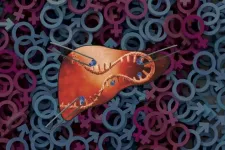(Press-News.org) Politicians may have good reason to turn to angry rhetoric, according to research led by political scientists from Colorado--the strategy seems to work, at least in the short term.
In a new study, Carey Stapleton at the University of Colorado Boulder and Ryan Dawkins at the U.S. Air Force Academy discovered that political furor may spread easily: Ordinary citizens can start to mirror the angry emotions of the politicians they read about in the news. Such "emotional contagion" might even drive some voters who would otherwise tune out of politics to head to the polls.
"Politicians want to get reelected, and anger is a powerful tool that they can use to make that happen," said Stapleton, who recently earned his PhD in political science at CU Boulder.
He and Dawkins, an assistant professor, published their results this month in the journal Political Research Quarterly.
The researchers surveyed roughly 1,400 people online from across the political spectrum, presenting them with a series of mock news stories about a recent political debate. They discovered that when it comes to politics, anger may lead to more anger. Subjects who read about an enraged politician from their own party were more likely to report feeling mad themselves than people who didn't. Those same steaming partisans also reported that they were more likely to get involved in politics, from attending rallies to voting on Election Day.
"Anger is a very strong, short-term emotion that motivates people into action," said Stapleton. "But there can be these much more negative implications in the long term. There's always the potential that anger can turn into rage and violence."
Tempers rising
Anger and politics in the U.S. have long gone hand-in-hand--the nation's second president, John Adams, once referred to Alexander Hamilton as a "bastard brat of a Scotch peddler." But Stapleton and Dawkins' findings come at a time when American politics has grown especially divisive.
According to the Pew Research Center, in the lead up to the 2020 presidential election, "around nine-in-ten Trump and Biden supporters said there would be 'lasting harm' to the nation if the other candidate won." That anger boiled over with deadly results when a mob of supporters of then-President Trump stormed the Capitol on Jan. 6.
Stapleton, who is not related to the Colorado political family, wanted to find out just how contagious those kinds of emotions could be. He will start a position as a postdoctoral researcher at the University of Notre Dame in the fall.
"Most political science research to date has focused on what we do when we feel an emotion like anger, rather than how our emotions affect other people," Stapleton said.
Fighting words
To find out how the emotions of politicians might rub off on their supporters, he and Dawkins ran an experiment. The duo wrote a series of news stories about a debate on immigration policy between two candidates for an open Congressional seat in Minnesota. Unbeknownst to the study's subjects, neither the candidates nor their debate were real.
In some cases, the faux politicians used language that tipped into outrage (although it might still look tame in the current political landscape). "When I look at our borders, I'm enraged by what I see," as an example. In other cases, the soap boxers stuck to more neutral language.
The team's results are among the first to show what many Americans have long known--that political anger can be a powerful force.
"We report being angrier after seeing our fellow partisans being angry," Stapleton said. "When the other side is angry, it doesn't seem to affect us much at all."
If Democrats read about a fellow Democrat getting mad, for example, they often reported feeling angry themselves. In contrast, blue voters who encountered neutral information or saw an angry quote from a Republican didn't experience the same swings in emotion.
The study also brought a twist: The people who were the most susceptible to those shifts weren't the die-hard partisans on either side of the aisle. They were more moderate voters.
"The really far left and right are already so amped up," Stapleton said. "But these weakly-aligned partisans who are notoriously less likely to participate in elections were more susceptible to changing their emotions."
For Stapleton, the results carry an important lesson for ordinary voters: When watching the news, people should pay attention to how politicians may try to appeal to or even manipulate emotions to get what they want. But, he added, anger is only part of the picture. In a previous study, he and his colleagues discovered that optimistic people are much more likely to be politically active than pessimists.
"Anger is one way we can get people to vote and get engaged in politics, but it's not the only way," he said. "It doesn't have to be all doom and gloom."
INFORMATION:
ROCHESTER, Minn. -- Did you know multiple sclerosis (MS) means multiple scars? New research shows that the brain and spinal cord scars in people with MS may offer clues to why they developprogressive disability but those with related diseases where the immune system attacks the central nervous system do not.
In a study published in Neurology, Mayo Clinic researchers and colleagues assessed if inflammation leads to permanent scarring in these three diseases:
MS.
Aquaporin-4 antibody positive neuromyelitis optica spectrum disorder (AQP4-NMOSD).
Myelin oligodendrocyte glycoprotein antibody associated disorder (MOGAD).
They also studied whether scarring may be a reason for ...
For decades, researchers around the world have searched for ways to use solar power to generate the key reaction for producing hydrogen as a clean energy source -- splitting water molecules to form hydrogen and oxygen. However, such efforts have mostly failed because doing it well was too costly, and trying to do it at a low cost led to poor performance.
Now, researchers from The University of Texas at Austin have found a low-cost way to solve one half of the equation, using sunlight to efficiently split off oxygen molecules from water. The finding, published recently in Nature Communications, represents a step forward toward greater adoption ...
GAINESVILLE, Fla. --- Plants are DNA hoarders. Adhering to the maxim of never throwing anything out that might be useful later, they often duplicate their entire genome and hang on to the added genetic baggage. All those extra genes are then free to mutate and produce new physical traits, hastening the tempo of evolution.
A new study shows that such duplication events have been vitally important throughout the evolutionary history of gymnosperms, a diverse group of seed plants that includes pines, cypresses, sequoias, ginkgos and cycads. Published today in Nature Plants, the research indicates that ...
FINDINGS
A chemical modification that occurs in some RNA molecules as they carry genetic instructions from DNA to cells' protein-making machinery may offer protection against non-alcoholic fatty liver, a condition that results from a build-up of fat in the liver and can lead to advanced liver disease, according to a new study by UCLA researchers.
The study, conducted in mice, also suggests that this modification -- known as m6A, in which a methyl group attaches to an RNA chain -- may occur at a different rate in females than it does in males, potentially explaining why females tend to have higher fat content in the liver. The researchers found that without the m6A modification, differences in liver fat content between the sexes were reduced dramatically.
In ...
WOODS HOLE, Mass. - What's a hungry marine microbe to do when the pickings are slim? It must capture nutrients - nitrogen, phosphorus, or iron - to survive, yet in vast expanses of the ocean, nutrients are extremely scarce. And the stakes are high: Marine microbial communities drive many of the elemental cycles that sustain all life on Earth.
One ingenious solution to this challenge is reported this week in Proceedings of the National Academy of Sciences. In low-nutrient environments, marine microbes can clump together and hook up with even tinier cells that have vibrating, hairlike appendages (cilia) on their surface. ...
New York, NY--July 19, 2021-- A new robotic neck brace from researchers at Columbia Engineering and their colleagues at Columbia's Department of Otolaryngology may help doctors analyze the impact of cancer treatments on the neck mobility of patients and guide their recovery.
Head and neck cancer was the seventh most common cancer worldwide in 2018, with 890,000 new cases and 450,000 deaths, accounting for 3% of all cancers and more than 1.5% of all cancer deaths in the United States. Such cancer can spread to lymph nodes in the neck, as well as other organs in the body. Surgically removing lymph nodes in the neck can help doctors investigate the risk of spread, but may result in pain and stiffness in the shoulders and neck for years afterward.
Identifying ...
CT scans for patients with concussion provide critical information about their risk for long-term impairment and potential to make a complete recovery - findings that underscore the need for physician follow-up.
In a study led by UC San Francisco, researchers looked at the CT scans of 1,935 patients, ages 17 and over, whose neurological exams met criteria for concussion, or mild traumatic brain injury (TBI), at hospitals throughout the nation. While links between CT imaging features and outcome have already been established in moderate and severe TBI, the researchers believe this is the first time the link has been identified in patients ...
Hamilton, ON (July 19, 2021) - A potentially game-changing treatment for people with, or at risk of, blood clots has been found effective by an international team of researchers led by McMaster University's Jeffrey Weitz.
Weitz's team compared abelacimab with enoxaparin as a control drug in 412 patients undergoing knee replacement surgery. Results showed that just one abelacimab injection prevents blood clots for up to a month after surgery, reducing the risk by about 80% compared with enoxaparin without increasing the risk of bleeding.
Their findings were published in the New England Journal of Medicine today, coinciding with Weitz's presentation of the research at the International Society on Thrombosis and Hemostasis 2021 Congress.
Weitz, a hematologist, is a professor of medicine ...
What The Study Did: This study investigated the association between time spent cycling and the risk of death from cardiovascular disease or any other cause among people with diabetes.
Authors: Mathias Ried-Larsen, Ph.D., of Rigshospitalet in Copenhagen, is the corresponding author.
To access the embargoed study: Visit our For The Media website at this link https://media.jamanetwork.com/
(doi:10.1001/jamainternmed.2021.3836)
Editor's Note: The article includes conflicts of interest and funding/support disclosures. Please see the article for additional information, including other authors, author contributions and affiliations, conflict of interest and financial disclosures, and funding and support.
# # #
Media advisory: The full study and editor's note are ...
What The Study Did: The experiences, perspectives and needs of transgender young people in accessing health care are described in this review of 91 studies.
Authors: Lauren S. H. Chong, M.D., of the Children's Hospital at Westmead in Sydney, Australia, is the corresponding author.
To access the embargoed study: Visit our For The Media website at this link https://media.jamanetwork.com/
(doi:10.1001/jamapediatrics.2021.2061)
Editor's Note: The article includes conflict of interest disclosures. Please see the article for additional information, including other authors, author contributions and affiliations, conflict of interest and financial disclosures, and funding and support.
# ...



